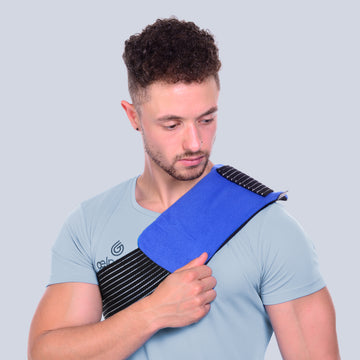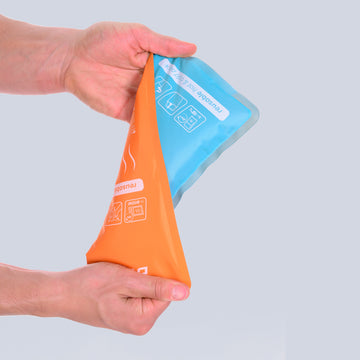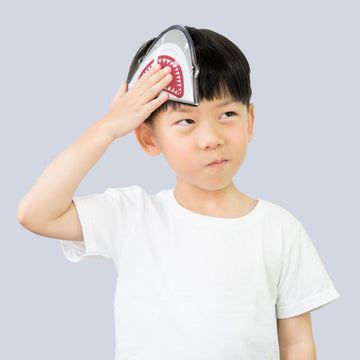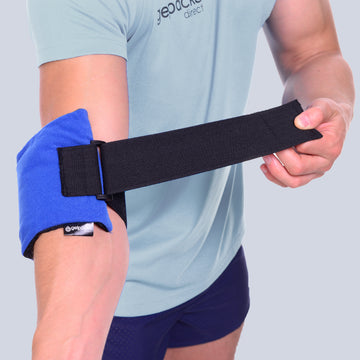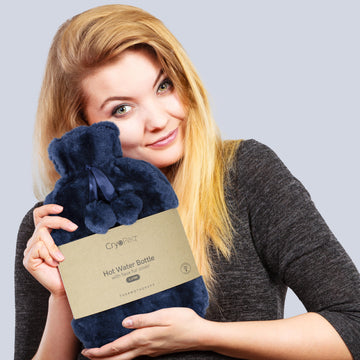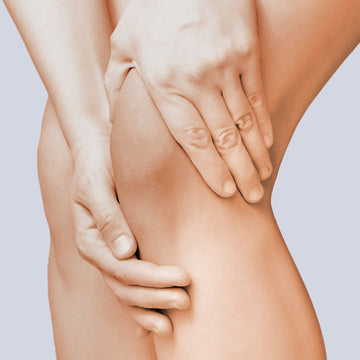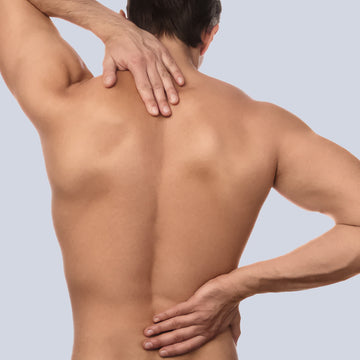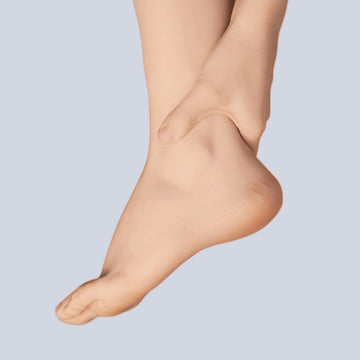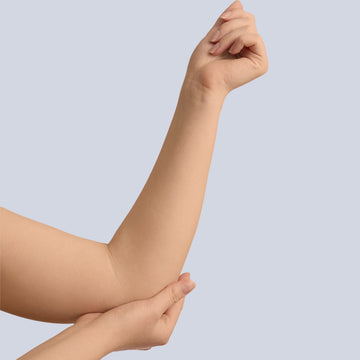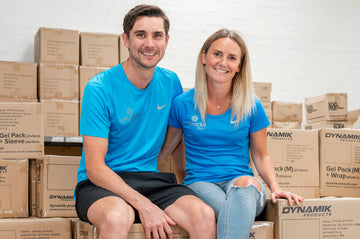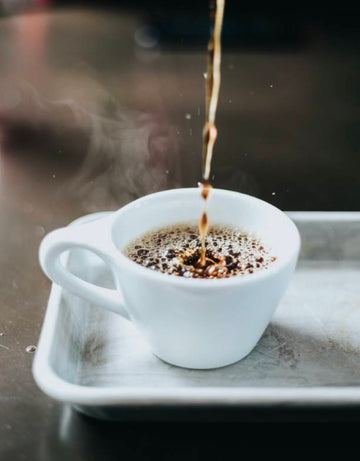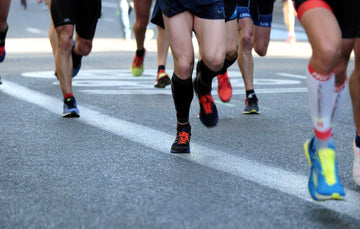Posted by Tia Patel | Nov-23-2020
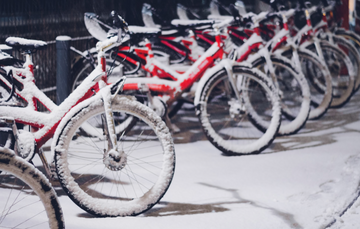
Winter Cycling Plan
As the saying goes, summer bodies are made in the winter! And that's no different with our cycling goals. After taking a well earned break when race seasons ends, it's time to get back on your bike. Winter is a great time to train your body and become a faster cyclist so you can come back next year bigger and better.
Make this your best winter yet by using our winter cycling training tips, find out how to navigate Christmas, beat the winter flu and create your own winter cycling training plan. Have a look below and let us know how you get on:
Looking at Goals
Begin your training plan by setting yourself a target goal of what you want to achieve next season. You can do this by making a list of all the events/races you have signed up to and writing a goal for each one. This could be a time you want to complete the race in, a podium place, a power output or to gain experience. Setting goals will help to focus the mind, provide motivation for winter training and help form the base of your training plan.
It’s important when looking at goals to evaluate the previous season asking yourself what went well? what went badly? What mistakes were made? And what you could do differently in the future to prevent the same mistakes and build on last year's performance.
TOP TIP: put your goals where you can see them to keep yourself motivated.
Progression
A steady progression ensures that everything is always moving in the right direction but you are also never going to become too tired. When planning, keep your goals in mind and keep in mind the areas you need to work on. For example, if your sprint is your weakness then it’s best to include some sprint work in your training plan from an early date.
There are three main ways you can build progression into your training plan: volume, intensity and frequency – or, in other words, you can train for longer, train harder or train more often. Increasing any one of these elements will ensure you are training harder.
Don’t forget that as you become fitter you will be able to handle more training with less recovery. Therefore, you might only need a recovery week every three weeks instead of every two weeks, or one rest day a week might suffice instead of your usual two.
But no matter how fit you are, you will need to build in adequate recovery into your plan. Without this you’ll never give your body the chance to process all the training you are doing and you’ll never see any real improvements.
Base vs Intensity Training
The old school approach to base training is to get in as many steady hours on the bike as possible. However, for most of us we have to balance work, family, social life and our training, not to mention the short days and weather that come with winter. Chances are you have a limited amount of time to train each week and, therefore, in order to accelerate your training you are going to need to increase the intensity or frequency of your sessions.
Base training rides are typically long and steady, undertaken at a moderate intensity which allows your body to make the necessary adaptations. By this we mean that you are able to sustain a conversation with your heart rate between 60 to 70 per cent of your maximum heart rate. Riding at this intensity teaches your body to burn predominantly fat instead of glycogen. Glycogen is how your body stores carbohydrates in your body but these stores are very limited and even when fully topped up will only last for between 30-90 minutes of intensive exercise. To be able to ride for four or five hours cyclists use fat as an energy source, however in order to burn fat your body still needs a small supply of carbohydrates – so it’s important to keep eating on a base ride! Therefore, base training improves the efficiency of your energy so you have more glycogen in the bank for the last push on the final climb.
Base training creates the foundations for you to build on, it essentially teaches your body to deal with a given amount of training and this means that later on in the spring or summer, when you are training harder, your body will be able to cope and you won’t become too tired. The second purpose of base training is to improve the efficiency of your body in order to increase the power, and therefore speed, at which you can ride without becoming fatigued.
Base training should be enjoyable. It’s the most social type of training as it gives you the ability to go out with friends, chat and enjoy the view. There will be plenty of sessions later on in the season spent staring at the wall and sweating on the turbo, so embrace your time spent on base training.
It is important to combine both intensity and base work by completing longer base rides over the weekend and concentrating on more specific and intense sessions during the week when time is limited.
Navigating Winter, Christmas and Illness
Bad weather is just a part of winter training. The key is to be both prepared and flexible.
In terms of preparation, there are a lot of things you can do to make winter training a little easier. First things first, you need to get your kit sorted. Remember that old saying, ‘there’s no such thing as bad weather, only unsuitable clothing’? That extends to equipment, too, and mudguards are essential if you plan on riding through winter in any sort of comfort, and are a particularly good idea if you train in a group, helping to keep your ride buddies dry as well as you.
As for kit, invest in good quality clothing to see you through winter, particularly when it comes to overshoes, gloves and a waterproof jacket. Remember, if you can stay dry that will go a long way to staying warm.
TOP TIP: get a bike fit to check your position. This will reduce the risk of injury and improve your power on the bike. A good bike fitter will also be able to identify any imbalances that you can then address in your training.
Christmas is always a difficult time but my advice is to plan ahead. Plan your training for the Christmas break early on. Compare how much training you are going to be able to complete compared with normal and then adjust your training pre and post the Christmas period to adjust. If Christmas is going to be a bit of a write-off training-wise then you can use it as a recovery week. That means the week before Christmas needs to be a harder week on the bike.
Listen to your body. If you’re not feeling 100 per cent then it could be that you are coming down with something. Learn to identify the signs that a cold is on its way and if you feel these coming on then cut back your training load for a few days. Hopefully this will be enough to stop you becoming ill. If, however, you do come down with something then don’t stress about missed training. The winter is long and there is plenty of time to make up what you have missed.
Again, the key is to be flexible. If you’ve missed this week due to illness then change the plan around and treat this as a recovery week. Don’t, however, jump straight back into full training as soon as you feel ok. Give yourself a couple more days than you feel you need and ensure you are 100 per cent before returning to full training, rather than coming back too soon and relapsing.
Off your Bike
What you do off the bike will greatly improve your performance! Through a mixture of strength building and conditioning exercises you will build core stability to improve your efficiency on the bike and reduce the likelihood of injury.
If you are going to include gym work then focus on lower body workouts but combine it with core stability work to improve all-round fitness. It's advised to do 3-5 sets of 5-8 reps on each muscle group (calves, hamstrings, quads, and glutes). Start off very gently and gradually increase the number of sets and the weight as you get stronger.
Many cyclists take up cross training in the winter to enhance and maintain aerobic fitness when you don’t have much time for the bike. But contrasting activities that deal with the elements that are weakened or neglected when cycling are probably best if you are already maintaining several hours of cycling in your weekly schedule.
TOP TIP: if it's affecting your training on your bike then you're doing too much. Your gym work should compliment your training and not make it harder for you to cycle.
Recovering effectively through stretching and treating any niggles with a gel pack is important for reducing the risk of injury.
Approaching Spring and a new season
As you approach spring, the weather will improve and there’s more daylight available to train. This is the time to really ramp up your training and get ready for the first events of the year. The trick is in striking a balance, you need to train over the Winter but you also need to be fresh for the Spring, both mentally and physically!
Approaching your first event of the year, your training needs to become more event-specific. For example, if you’re a criterium rider, as you get close to the season you need to include more sprint work and short intervals into your training. However, if you are targeting hilly sportives then you want to increase the amount of climbing and the intensity of your climbing efforts.
Incorporate a range of races throughout the season for different purposes, e.g. a couple of races for PBs, a few more for training and prep and a few for experience and recovery. This will enhance your race experience and create a more positive approach to tackling race day.
Again, the key is specificity. Specify your training to your goals and put all the pieces together that you have been working on during the winter and you should be in a great place to attack your first event of the season.
We’re working hard to help to provide you with all the help and support we can to help you #PushHarder and #RecoverBetter, so do your best to enjoy a winter of cycling and reap the benefits in the Spring!
#TeamGPD
Bibliography
https://roadcyclinguk.com/how-to/eight-steps-to-create-your-perfect-winter-training-plan.html
https://www.trainerroad.com/blog/winter-training-guide-11-ways-to-become-a-faster-cyclist/
https://www.cyclefront.com/ten-types-of-bike-racing-an-overview-of-road-and-off-road-events/
